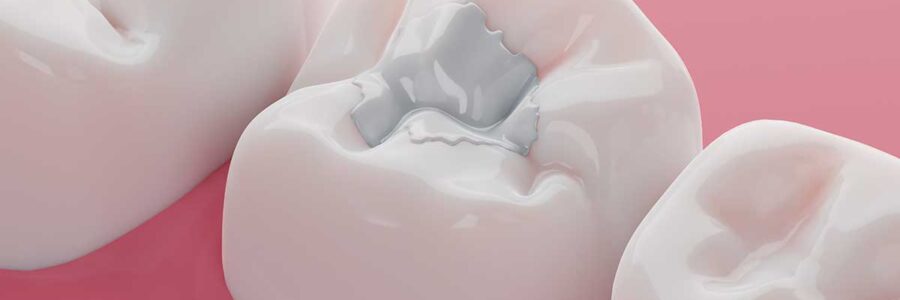Mercury amalgam fillings, often called silver fillings, have been a standard in dentistry for over a century. These fillings are durable and cost-effective and are composed of a mixture of mercury, silver, tin, and copper.[1] However, their high mercury content raises serious health concerns. Mercury is one of the most toxic elements known to humans, and its presence in dental fillings has sparked debate about its safety and long-term impact on health.
Mercury Vapor: The Invisible Threat
Mercury amalgam fillings continuously release small amounts of mercury vapor. Everyday actions like chewing, grinding, and consuming hot foods or drinks can increase this release. Once inhaled, mercury vapor enters the bloodstream and crosses the blood-brain barrier, where it accumulates in brain tissue. This accumulation can lead to a range of neurological symptoms, including memory loss, mood changes, and cognitive decline. Additionally, chronic mercury exposure has been linked to immune system suppression, chronic fatigue, and cardiovascular issues.[2]
Toxic Waste in Your Mouth
When mercury fillings are removed, they are classified as hazardous waste and must be disposed of according to strict environmental guidelines. This stark contrast between their disposal requirements and their use in the human body raises important questions about safety. Mercury’s volatility and toxicity make it a unique threat, even in small amounts.[3]
The Challenges of Mercury Detoxification
Once mercury enters the body, it is difficult to eliminate. The metal binds strongly to tissues, particularly in the brain and kidneys, making natural detoxification processes slow and inefficient. Chelation therapy, a medical procedure used to remove heavy metals, carries risks of redistributing mercury to other parts of the body. This underscores the importance of professional guidance and targeted support when addressing mercury toxicity.
Why Safe Removal Is Crucial
If you’re considering the removal of mercury amalgam fillings, it’s vital to seek a biological dentist trained in safe removal techniques. These professionals use protocols designed to minimize mercury exposure, such as rubber dams to isolate the tooth, high-volume suction to capture mercury vapor, and protective equipment for both the patient and the dental team. Without these measures, removal can lead to significant mercury exposure, increasing the risk of health complications.
Protecting Dentists and Patients
The risks of mercury exposure extend to dental professionals who handle amalgam fillings regularly. Biological dentists take precautions to protect themselves and their staff, recognizing that cumulative mercury exposure can have serious health consequences. Their training and adherence to safety protocols ensure a safer environment for everyone involved.
Supporting Detoxification After Removal
Post-removal detoxification is a critical step in addressing mercury exposure. Nutrient support plays a significant role, with antioxidants like selenium, vitamin C, and alpha-lipoic acid helping to neutralize oxidative stress. Hydration, exercise, and detoxification practices such as sauna therapy can aid the body in eliminating mercury. Supplements specifically designed to support cellular health and detoxification can provide additional assistance in managing heavy metal exposure.
Conclusion
Mercury amalgam fillings may seem convenient for dental cavities, but their potential health risks cannot be ignored. From the release of toxic mercury vapor to the challenges of detoxification, these fillings pose a hidden threat to overall well-being. By working with a biological dentist and taking steps to support detoxification, you can address these risks and prioritize your health for the long term.
References:
- Lorscheider, F. L., et al. “Mercury Exposure from ‘Silver’ Tooth Fillings: Emerging Evidence Questions a Traditional Dental Paradigm.” FASEB Journal: Official Publication of the Federation of American Societies for Experimental Biology, vol. 9, no. 7, Apr. 1995, pp. 504–08.
- Health, Center for Devices and Radiological. “Information for Patients About Dental Amalgam Fillings.” FDA, Aug. 2023.
- Mutter, Joachim. “Is Dental Amalgam Safe for Humans? The Opinion of the Scientific Committee of the European Commission.” Journal of Occupational Medicine and Toxicology (London, England), vol. 6, Jan. 2011, p. 2.


